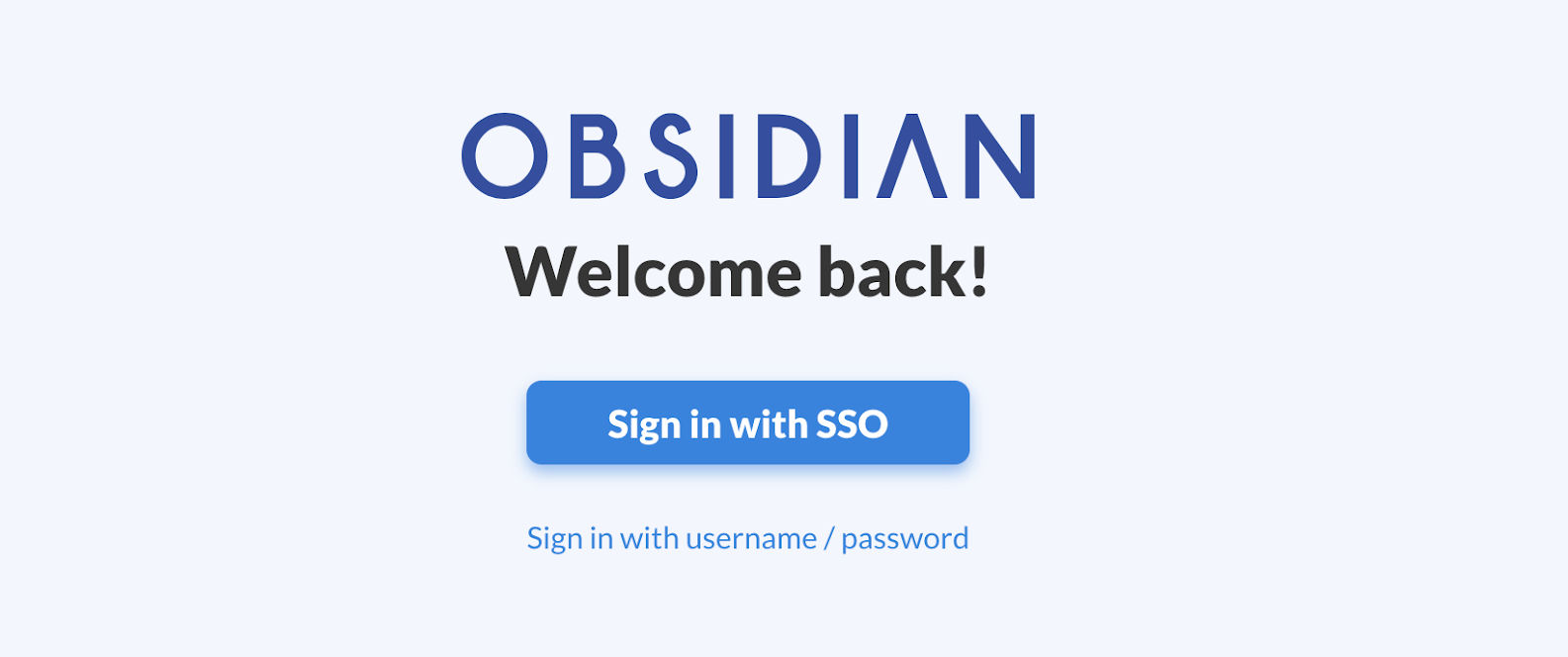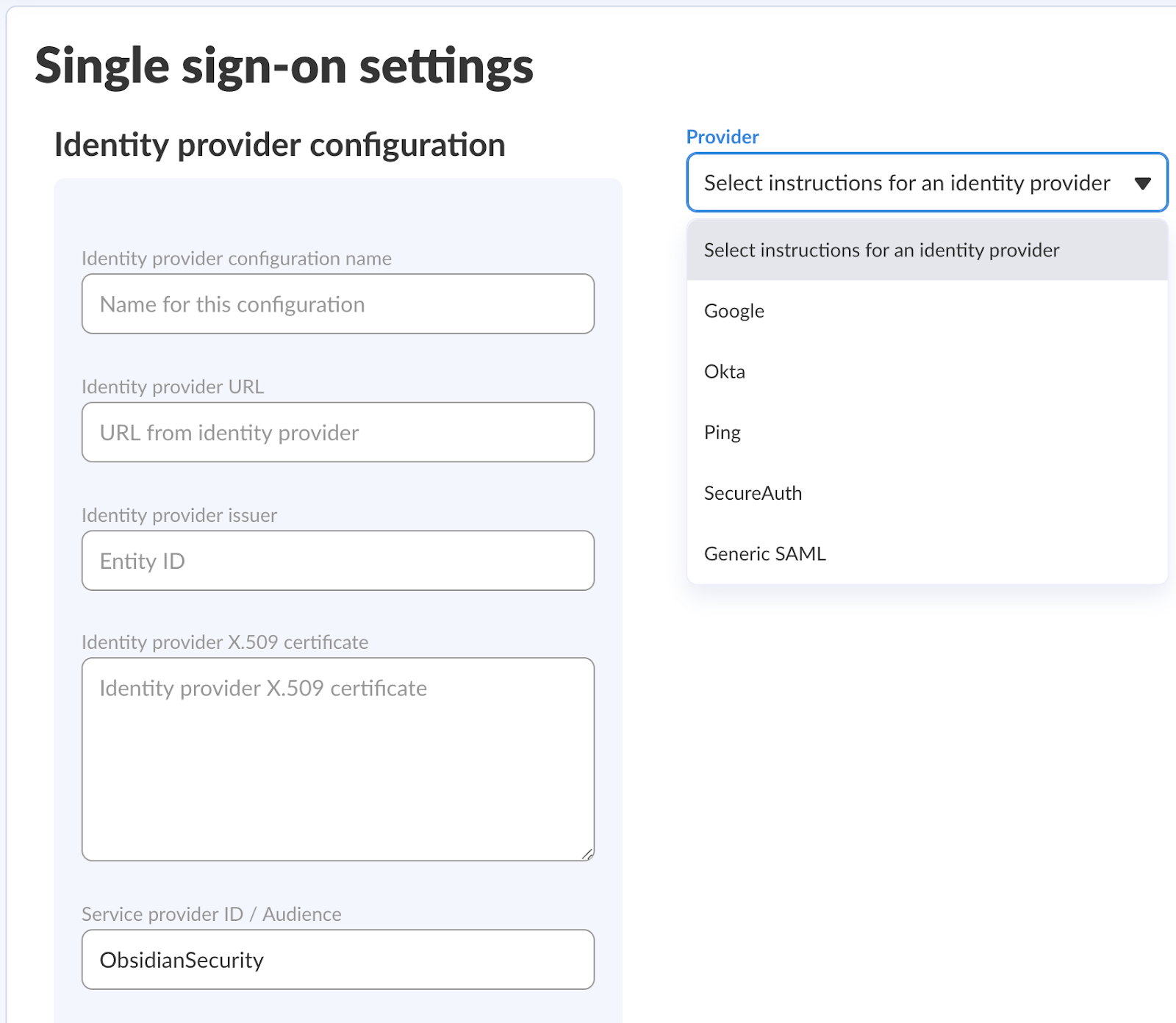One of the measures of the enterprise-readiness of a security solution is how well it integrates with other parts of the security ecosystem. Most mid-to-large enterprise environments have systems for IT service management, data lakes, analytics dashboards, log and alert aggregators, and orchestration solutions. The Obsidian solution plays well in your security and operations ecosystem by giving you out-of-the-box integrations to these solutions.
We are proud to continue this journey with support for SAML SSO authentication to the Obsidian platform. Obsidian customers can easily configure their accounts to use SAML identity providers such as Okta, Ping, Google, and SecureAuth for login. Let’s take a quick look at why you’d want to use an identity provider, and how it works.

Why Use an Identity Provider?
Many enterprises use identity providers to authenticate their users into SaaS applications. There are several reasons for doing this:
- Identity providers remove the need to establish trust with every service the company uses.
- They often provide security capabilities such as multi-factor authentication (MFA), adaptive authentication and logging that protect accounts from compromise and simplify investigations.
- By using an identity provider, you can implement consistent authentication policies across all your apps.
- Single sign-on (SSO) makes it convenient for users to enter credentials once and gain access to all their applications.
- Identity providers simplify the onboarding process for new sanctioned applications in the organization.
Single Sign-on with Obsidian
Obsidian now joins the ranks of SaaS applications that support single sign-on. You can configure your Obsidian account to use any identity provider that supports Security Assertion Markup Language (SAML) 2.0. We provide detailed instructions for how to do this with several leading identity providers – Okta, Google, Ping and SecureAuth. We also cover onboarding instructions for how to configure SSO between Obsidian and a generic identity provider. To set up SSO, you will need to have administrator privileges for your identity provider.

Conclusion
SSO support is another testament to Obsidian’s commitment to be an enterprise-class SaaS security solution for every organization. So what are you waiting for? If you are an Obsidian customer, configure SSO in minutes. If your company considers SaaS security a priority and is concerned about securing SaaS apps, request a demo.